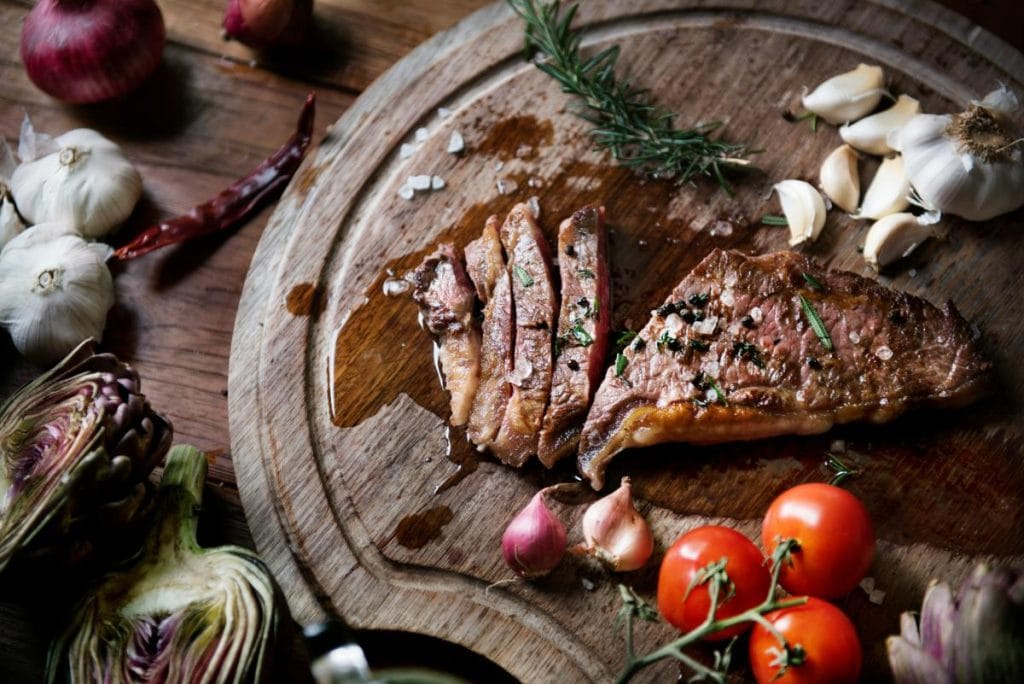If you’ve ever stood in the meat aisle debating between regular beef and the pricier grass-fed option, you’re not alone. Grass-fed beef has gained popularity in recent years, but is it really worth the extra cost? Let’s break down the differences and why some people are making the switch.

Health Benefits: A Nutritional Edge
One of the biggest reasons people choose grass-fed beef is its nutritional profile. Compared to traditional grain-fed beef, it offers several health perks:
- More Omega-3s – Grass-fed beef contains up to five times more omega-3 fatty acids, which are essential for heart and brain health. If you’re trying to get more healthy fats in your diet, this is a big plus.
- Higher in CLA (Conjugated Linoleic Acid) – CLA is a type of fat that has been linked to reduced body fat and a boosted metabolism. Some studies suggest it may also support immune health.
- Fewer Calories, More Nutrients – Grass-fed beef is leaner than conventional beef, meaning fewer calories per serving. It also has more Vitamin E and beta-carotene, two antioxidants that support overall health.
For those trying to eat cleaner, grass-fed beef is often a preferred option because it’s less likely to contain added hormones and antibiotics. While grain-fed beef in the U.S. is regulated for safety, some consumers like the peace of mind that comes with choosing a product that’s been raised more naturally.
How It’s Raised: Ethics and Animal Welfare
Another reason some people opt for grass-fed beef is how the cattle are raised. Instead of being confined in feedlots and fed grain-based diets, grass-fed cows roam pastures and eat what they were naturally meant to—grass.
This more natural lifestyle is seen as a win for animal welfare. Cattle that graze freely tend to have less stress and fewer health issues compared to those in crowded feedlots. While grain-fed cows aren’t necessarily treated poorly, there’s a growing awareness of how farming practices impact animal well-being.
Environmental Impact: A Sustainable Choice?
There’s some debate over whether grass-fed beef is more sustainable than grain-fed, but here’s what we do know:
- Better for Soil Health – Well-managed grazing helps fertilize soil naturally and can prevent overgrazing.
- Supports Biodiversity – Keeping cattle on pastures encourages healthier ecosystems and maintains open grasslands.
- Less Pollution from Feedlots – Large-scale feedlots can create significant waste and pollution. Raising cattle on open land reduces this issue.
However, it’s worth noting that grass-fed beef production takes longer and requires more land than grain-fed beef, which raises questions about overall efficiency. If sustainability is your main concern, looking for local, responsibly raised beef can be a good middle ground.
Flavor and Texture: What to Expect
If you’re used to the marbled richness of grain-fed beef, you might notice that grass-fed beef has a slightly different taste and texture.
- Bolder, Earthier Flavor – Some describe the taste as more “meaty” or complex because the cows’ varied diets affect the meat’s flavor profile.
- Leaner and Sometimes Chewier – Less fat means it can be tougher if not cooked properly. The key is low and slow cooking methods, which help keep it tender.
If you’re new to grass-fed beef, consider starting with ground beef or cuts like ribeye, which tend to have more natural marbling.
Why Isn’t Everyone Eating Grass-Fed Beef?
With all these benefits, you might wonder why everyone isn’t making the switch. There are a few reasons:
- Cost – Grass-fed beef is often more expensive due to longer raising times and higher production costs.
- Availability – It’s becoming easier to find, but it’s still not as widely available as conventional beef.
- Taste Preference – Some people prefer the milder, buttery flavor of grain-fed beef and the extra marbling that comes with it.
That said, if you’re looking for high-quality organic grass fed beef for sale, many local farms and online retailers now offer grass-fed options at competitive prices. Buying in bulk or choosing ground beef instead of steak cuts can also make it more affordable.
Final Thoughts: Is Grass-Fed Beef Worth It?
At the end of the day, the choice comes down to personal preference, budget, and priorities. If you’re focused on better nutrition, ethical farming, and environmental impact, grass-fed beef is a great option. If cost and taste are your top concerns, grain-fed beef is still a solid choice.
No matter which type you choose, what matters most is sourcing your beef from reputable producers who prioritize quality and responsible farming. And as always, the best meals are the ones shared around the dinner table with family and friends!
